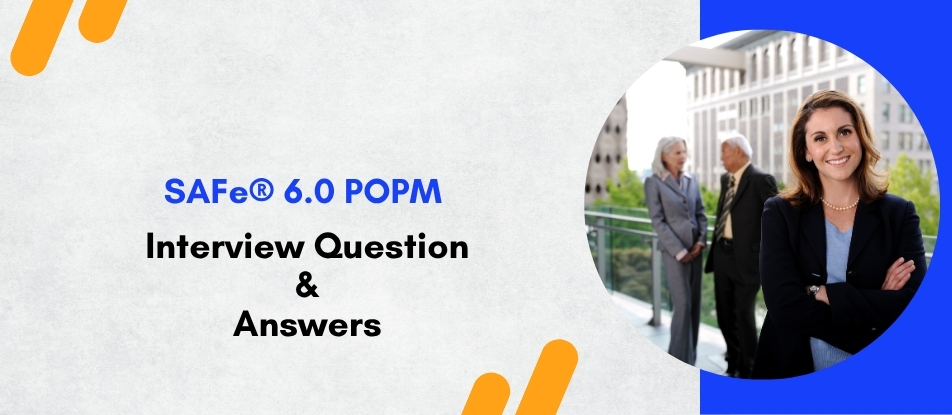
The SAFe® 6.0 Product Owner/Product Manager (POPM) course prepares professionals to perform key roles in Agile Release Trains by mastering backlog management, PI planning, customer collaboration, and feature prioritization. It emphasizes Lean-Agile principles, value delivery, and cross-team coordination. Participants gain practical skills to align teams with business goals, support continuous delivery, and enhance product value across the enterprise using the latest SAFe® 6.0 framework.
SAFe® 6.0 POPM Training Interview Questions Answers - For Intermediate
1. What is the purpose of PI Planning in SAFe®?
PI Planning is a cadence-based event held at the beginning of every Program Increment. It aligns teams on a shared mission and vision, helps define Team and Program PI Objectives, identifies cross-team dependencies, and creates a commitment to delivery over the next 8–12 weeks.
2. How do Product Owners contribute to team-level backlog refinement?
Product Owners lead and facilitate backlog refinement by ensuring stories are clear, estimated, prioritized, and aligned with business goals. They also collaborate with the team to split larger stories, clarify acceptance criteria, and ensure readiness for iteration planning.
3. What is the Program Kanban and how is it used?
The Program Kanban is a visual tool used to manage the flow of Features through various stages such as funnel, analysis, backlog, implementation, and done. It ensures visibility of feature progress, helps manage WIP limits, and supports prioritization and capacity planning.
4. What is meant by Solution Intent in SAFe®?
Solution Intent captures the intended and actual behavior of the solution. It includes both functional and non-functional requirements and acts as a single source of truth. It helps guide development, ensure compliance, and support validation across teams and ARTs.
5. How do Product Managers maintain alignment with business stakeholders?
Product Managers maintain alignment by continuously engaging with stakeholders, understanding strategic priorities, aligning features with business objectives, updating roadmaps, and presenting progress in Program Syncs, demos, and stakeholder reviews.
6. What is the significance of Business Owners in SAFe®?
Business Owners are critical stakeholders responsible for business outcomes. They participate in PI Planning, assign Business Value to PI Objectives, and provide guidance throughout the PI. Their active involvement ensures alignment between development and enterprise priorities.
7. How are Enabler Features different from Business Features in SAFe®?
Enabler Features support exploration, architecture, infrastructure, or compliance. They prepare the system for business functionality but don’t always deliver direct user-facing value. Business Features, on the other hand, provide direct value to end users or customers.
8. What is the importance of Architectural Runway in SAFe®?
The Architectural Runway refers to the existing code, components, and infrastructure needed to support the implementation of near-term features without significant redesign. It enables faster delivery and reduces the risk of rework by anticipating architectural needs.
9. What is Lean User Experience (Lean UX) and how is it integrated in SAFe®?
Lean UX emphasizes hypothesis-driven development, user testing, and collaboration. In SAFe®, it is used within Agile Teams to quickly validate assumptions, refine features, and build customer-centric solutions through short feedback loops and minimal upfront design.
10. How are Team Objectives and Program Objectives connected in SAFe®?
Team PI Objectives are derived during PI Planning and contribute to the larger Program PI Objectives. Program Objectives represent the collective commitment of all teams on the ART and reflect how individual team efforts align with enterprise-level outcomes.
11. How does SAFe® support Agile budgeting and funding?
SAFe® supports Lean budgeting by allocating budgets to value streams instead of projects. This approach provides greater flexibility, reduces delays in funding decisions, and empowers Product Managers and Business Owners to make investment choices within set guardrails.
12. What is the role of the Release Train Engineer (RTE) and how do POs and PMs interact with them?
The RTE facilitates ART-level events such as PI Planning, Inspect & Adapt, and ART Syncs. POs and PMs work closely with the RTE to coordinate feature delivery, manage risks and dependencies, and support continuous improvement initiatives across the ART.
13. What is the role of a Product Owner in Iteration Planning?
During Iteration Planning, the Product Owner presents the highest-priority stories to the team, clarifies requirements, ensures alignment with PI Objectives, and participates in task breakdown. The PO also confirms the team’s commitment aligns with business expectations.
14. How does SAFe® promote Built-In Quality?
SAFe® enforces Built-In Quality through practices such as Test-Driven Development, Continuous Integration, Peer Reviews, and automated testing. POs and PMs ensure that quality is prioritized and that the Definition of Done includes necessary quality criteria for each backlog item.
15. What is the difference between Roadmap and Backlog in SAFe®?
A Roadmap is a time-based plan that shows how features will be delivered over upcoming PIs. It provides a strategic view of delivery. A Backlog, in contrast, is a prioritized list of features, enablers, or stories awaiting implementation. The Roadmap guides backlog prioritization.
SAFe® 6.0 POPM Training Interview Questions Answers - For Advanced
1. What is the role of the POPM in facilitating flow within the Agile Release Train (ART)?
The POPM plays a critical role in optimizing and facilitating flow within the ART by continuously managing and prioritizing backlogs to ensure a smooth and uninterrupted delivery of value. This involves collaborating with System Architects, Scrum Masters, and the Release Train Engineer (RTE) to eliminate bottlenecks and optimize Work In Progress (WIP) limits. The POPM also ensures that features and stories are small, well-defined, and testable, which supports continuous integration and faster feedback. Additionally, by applying flow metrics like lead time, throughput, and cycle time, the POPM helps teams identify inefficiencies, adjust priorities, and deliver predictably within the cadence of the Program Increment.
2. How should a POPM handle architectural enablers when there is pressure to focus only on business features?
Architectural enablers are essential for maintaining a scalable, flexible, and sustainable solution architecture. While business features deliver immediate value, architectural enablers ensure that the system can adapt and evolve. The POPM must act as an advocate for long-term technical health by working closely with System and Solution Architects to understand architectural needs and translating them into enabler features or stories. These should be made visible in the backlog, evaluated for economic impact, and prioritized using models like WSJF. Clear communication with stakeholders about the risks of neglecting architectural work, such as technical debt or scalability issues, is vital to secure buy-in and ensure a balanced delivery pipeline.
3. Describe the interaction between a POPM and the System Team in supporting continuous integration.
The System Team provides infrastructure, tooling, and support for continuous integration, testing, and deployment. The POPM works closely with the System Team to ensure that stories and features are developed in a manner compatible with the continuous delivery pipeline. This collaboration involves prioritizing infrastructure enablers, clarifying functional and non-functional requirements, and ensuring appropriate test coverage and automation. The POPM also participates in system demos and provides feedback on system-level integration issues. By maintaining strong alignment with the System Team, the POPM ensures faster feedback loops, higher quality releases, and a consistent ability to release on demand.
4. How can the POPM contribute to a Lean-Agile budgeting approach at the value stream level?
In a Lean-Agile budgeting model, budgets are allocated to value streams instead of individual projects, enabling greater autonomy and responsiveness. The POPM contributes by ensuring that investment decisions within the ART align with the strategic objectives and deliver measurable outcomes. This involves managing feature-level ROI, making trade-offs between competing priorities, and aligning backlog items with funded initiatives. Additionally, the POPM provides data and insights to support guardrail decision-making, helps track spend-to-value realization, and ensures that features and enablers being prioritized are within the financial constraints of the value stream. Active engagement with Lean Portfolio Management ensures transparency and governance while preserving agility.
5. Explain how SAFe®’s dual-operating system impacts the role of the POPM.
SAFe® promotes a dual-operating system, balancing the hierarchical structure of traditional management with a flexible network of Agile teams. This enables organizations to innovate while maintaining operational efficiency. The POPM operates within this duality by translating strategic decisions from leadership into executable features and stories while remaining responsive to customer feedback and team-level insights. The POPM must communicate effectively across both formal and informal structures, align the Agile teams with strategic priorities, and act as a bridge between top-down governance and bottom-up innovation. This requires agility in mindset, fluency in Lean-Agile principles, and strong stakeholder management.
6. What actions can a POPM take to support sustainable development within an ART?
Sustainable development ensures that teams can maintain a consistent pace indefinitely. The POPM supports this by maintaining a healthy, prioritized backlog that includes a balance of new functionality, technical debt reduction, and enabler work. By avoiding overcommitment during PI Planning, the POPM helps teams focus on achievable objectives. Promoting the use of the Innovation and Planning (IP) Iteration also allows teams time to recharge, innovate, and address infrastructure needs. The POPM should encourage metrics such as team velocity and defect trends to monitor development health and collaborate with Scrum Masters and Agile Teams to ensure workloads are manageable and goals remain realistic.
7. How does a POPM support compliance and regulatory requirements in SAFe®?
Compliance and regulatory requirements must be addressed without hindering agility. The POPM supports this by working with Business Owners, System Architects, and compliance teams to understand regulatory constraints early in the development process. These requirements are then captured as enablers or compliance stories and prioritized in the backlog. Clear acceptance criteria and traceability mechanisms are established to ensure that regulatory obligations are met. The POPM also ensures that appropriate documentation and quality checks are integrated into the Definition of Done. By proactively integrating compliance into the delivery process, the POPM ensures that regulatory goals are achieved without compromising flow.
8. What strategies can a POPM use to manage uncertainty in large-scale solution development?
Uncertainty is inherent in large-scale development, especially when dealing with evolving technologies or markets. The POPM mitigates uncertainty by using hypothesis-driven development, early MVP releases, and frequent feedback loops. Lean UX and Design Thinking practices help validate assumptions with minimal investment. At the backlog level, the POPM decomposes work into smaller, testable increments and prioritizes based on learning value and risk reduction. Collaborating with architects and solution management helps address technical uncertainties early. The POPM also ensures flexibility in PI Planning and roadmaps, using rolling-wave planning to adapt scope as new insights emerge.
9. How should a POPM coordinate with external suppliers in a SAFe® environment?
External suppliers are often critical contributors to large-scale solutions. The POPM must coordinate closely with suppliers to align deliverables, timelines, and expectations. This involves integrating supplier work into the Program Backlog, establishing dependencies during PI Planning, and ensuring supplier commitments are reflected on the Program Board. Regular sync meetings, shared demos, and joint problem-solving sessions help ensure visibility and progress. The POPM must also manage risks related to delivery delays, contract constraints, and quality expectations by maintaining open communication and involving procurement or legal teams when necessary. Clear acceptance criteria and deliverable standards help align expectations and outcomes.
10. In what ways can a POPM foster innovation within the Agile Release Train?
Innovation is fostered by creating a safe environment for experimentation and learning. The POPM can support this by allocating time in the IP Iteration for innovation activities, hackathons, or spikes. Encouraging the use of innovation enablers and customer co-creation practices helps teams explore new ideas. Prioritizing stories with high learning value or unknowns also contributes to a culture of innovation. The POPM should regularly solicit ideas from team members, customers, and stakeholders, and validate them through quick prototypes or MVPs. Creating a balance between delivery commitments and discovery work allows for continuous evolution of the solution in alignment with market trends.
11. How should a POPM respond to a significant shift in business strategy mid-PI?
A shift in business strategy mid-PI can disrupt ongoing work but must be addressed promptly to maintain alignment. The POPM should first assess the scope and impact of the change on existing PI Objectives and backlogs. This involves collaborating with Product Management, Business Owners, and Agile Teams to reprioritize stories and features. If necessary, a backlog adjustment or mid-PI replanning may be conducted. Communicating the rationale and implications of the change to the teams and stakeholders ensures transparency and buy-in. The POPM should also update roadmaps and dependencies to reflect the new direction and ensure that metrics continue to track value delivery.
12. What is the role of the POPM in managing NFRs (Non-Functional Requirements)?
Non-Functional Requirements (NFRs) define critical quality attributes such as performance, security, scalability, and usability. The POPM ensures that NFRs are captured during backlog refinement and adequately represented in the Definition of Done. These requirements are often implemented through enabler stories and must be validated through performance testing, code analysis, or architectural reviews. The POPM collaborates with System Architects, DevOps, and QA teams to ensure that NFRs are integrated into ongoing work and not overlooked in favor of functional stories. Prioritizing NFRs alongside business features ensures system robustness and aligns the solution with customer and regulatory expectations.
13. Explain the importance of transparency in the POPM role and how it can be achieved.
Transparency builds trust and enables effective decision-making across all SAFe® levels. The POPM maintains transparency by keeping backlogs visible and current, sharing roadmaps, and clearly communicating priorities, trade-offs, and risks. Regular updates during ART Syncs, Sprint Reviews, and PI Planning events help stakeholders stay informed. Acceptance criteria, Definition of Done, and metrics such as velocity or value delivery are shared openly to create a data-driven culture. Leveraging digital tools like Jira, Rally, or Aha! ensures that all stakeholders have access to real-time information. This level of transparency minimizes surprises and enhances alignment across the ART.
14. What are some common anti-patterns observed in POPM execution, and how can they be addressed?
Common anti-patterns include overloading teams with excessive WIP, prioritizing only customer-facing features while neglecting technical debt, micromanaging teams instead of empowering them, and failing to maintain a properly refined backlog. These issues can lead to reduced velocity, technical degradation, and low morale. To address these anti-patterns, the POPM should focus on flow-based delivery, balanced prioritization, empowerment of self-organizing teams, and continuous backlog grooming. Adopting Lean-Agile leadership traits, fostering servant leadership, and participating in regular retrospectives helps the POPM reflect on and correct behaviors that may hinder ART performance.
15. How does the POPM ensure cross-team alignment in a multi-team ART?
In a multi-team ART, cross-team alignment is essential to ensure seamless delivery. The POPM supports alignment through active participation in PI Planning, where dependencies, risks, and objectives are discussed and agreed upon. Throughout the PI, the POPM attends ART Syncs, Product Owner Syncs, and other coordination ceremonies to track progress and resolve blockers. Regular communication with other Product Owners, Scrum Masters, and the RTE ensures synchronization across teams. Artifacts like the Program Board, PI Objectives, and shared roadmaps act as tools for continuous alignment. By promoting a collaborative environment and maintaining transparency, the POPM helps the ART function as a unified delivery engine.
Course Schedule
| Jan, 2026 | Weekdays | Mon-Fri | Enquire Now |
| Weekend | Sat-Sun | Enquire Now | |
| Feb, 2026 | Weekdays | Mon-Fri | Enquire Now |
| Weekend | Sat-Sun | Enquire Now |
Related Courses
Related Articles
- Liferay Fundamental: Learn to Create Powerful Digital Experiences
- How Snowflake Administering Training Can Boost Your Career?
- A Technical Guide to RPA Certification
- Python has become the go-to language of data science – know its so-called libraries
- Master Controller Area Network (CAN) Training for Career Boost
Related Interview
- Salesforce App Builder (DEV 401) Training Interview Questions Answers
- Proofpoint Email Security Interview Questions Answers
- Salesforce Automotive Cloud Training Interview Questions Answers
- Collibra Data Governance Training Interview Questions Answers
- Informatica Data Engineering Training Interview Questions Answers
Related FAQ's
- Instructor-led Live Online Interactive Training
- Project Based Customized Learning
- Fast Track Training Program
- Self-paced learning
- In one-on-one training, you have the flexibility to choose the days, timings, and duration according to your preferences.
- We create a personalized training calendar based on your chosen schedule.
- Complete Live Online Interactive Training of the Course
- After Training Recorded Videos
- Session-wise Learning Material and notes for lifetime
- Practical & Assignments exercises
- Global Course Completion Certificate
- 24x7 after Training Support

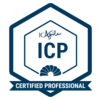






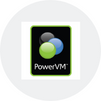

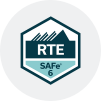
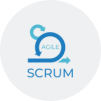
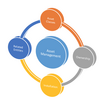

 Join our Live Instructor-Led online classes delivered by industry experts
Join our Live Instructor-Led online classes delivered by industry experts